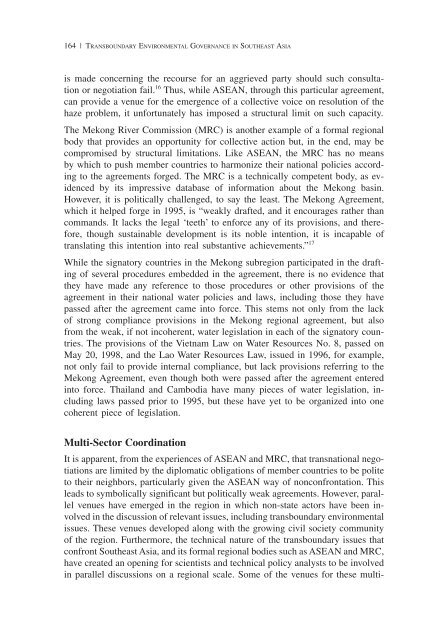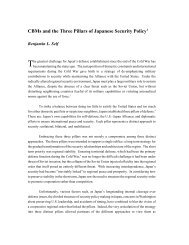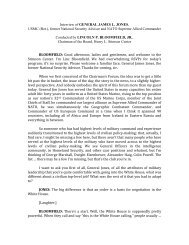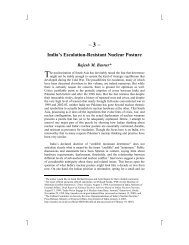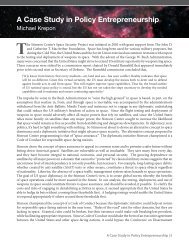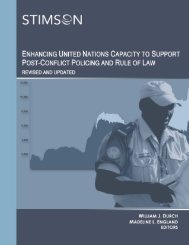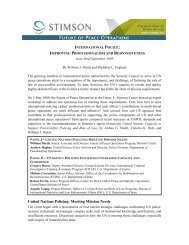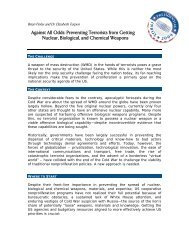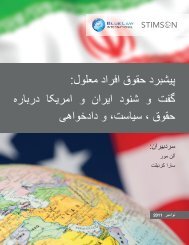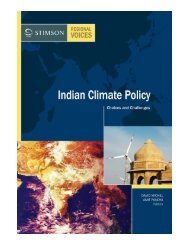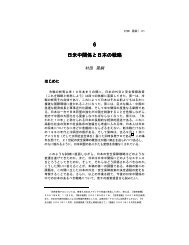transboundary environmental governance in southeast asia
transboundary environmental governance in southeast asia
transboundary environmental governance in southeast asia
You also want an ePaper? Increase the reach of your titles
YUMPU automatically turns print PDFs into web optimized ePapers that Google loves.
LIF001_ch8 6/26/08 1:37 PM Page 164<br />
164|TRANSBOUNDARY ENVIRONMENTAL GOVERNANCE IN SOUTHEAST ASIA<br />
is made concern<strong>in</strong>g the recourse for an aggrieved party should such consultation<br />
or negotiation fail. 16 Thus, while ASEAN, through this particular agreement,<br />
can provide a venue for the emergence of a collective voice on resolution of the<br />
haze problem, it unfortunately has imposed a structural limit on such capacity.<br />
The Mekong River Commission (MRC) is another example of a formal regional<br />
body that provides an opportunity for collective action but, <strong>in</strong> the end, may be<br />
compromised by structural limitations. Like ASEAN, the MRC has no means<br />
by which to push member countries to harmonize their national policies accord<strong>in</strong>g<br />
to the agreements forged. The MRC is a technically competent body, as evidenced<br />
by its impressive database of <strong>in</strong>formation about the Mekong bas<strong>in</strong>.<br />
However, it is politically challenged, to say the least. The Mekong Agreement,<br />
which it helped forge <strong>in</strong> 1995, is “weakly drafted, and it encourages rather than<br />
commands. It lacks the legal ‘teeth’ to enforce any of its provisions, and therefore,<br />
though susta<strong>in</strong>able development is its noble <strong>in</strong>tention, it is <strong>in</strong>capable of<br />
translat<strong>in</strong>g this <strong>in</strong>tention <strong>in</strong>to real substantive achievements.” 17<br />
While the signatory countries <strong>in</strong> the Mekong subregion participated <strong>in</strong> the draft<strong>in</strong>g<br />
of several procedures embedded <strong>in</strong> the agreement, there is no evidence that<br />
they have made any reference to those procedures or other provisions of the<br />
agreement <strong>in</strong> their national water policies and laws, <strong>in</strong>clud<strong>in</strong>g those they have<br />
passed after the agreement came <strong>in</strong>to force. This stems not only from the lack<br />
of strong compliance provisions <strong>in</strong> the Mekong regional agreement, but also<br />
from the weak, if not <strong>in</strong>coherent, water legislation <strong>in</strong> each of the signatory countries.<br />
The provisions of the Vietnam Law on Water Resources No. 8, passed on<br />
May 20, 1998, and the Lao Water Resources Law, issued <strong>in</strong> 1996, for example,<br />
not only fail to provide <strong>in</strong>ternal compliance, but lack provisions referr<strong>in</strong>g to the<br />
Mekong Agreement, even though both were passed after the agreement entered<br />
<strong>in</strong>to force. Thailand and Cambodia have many pieces of water legislation, <strong>in</strong>clud<strong>in</strong>g<br />
laws passed prior to 1995, but these have yet to be organized <strong>in</strong>to one<br />
coherent piece of legislation.<br />
Multi-Sector Coord<strong>in</strong>ation<br />
It is apparent, from the experiences of ASEAN and MRC, that transnational negotiations<br />
are limited by the diplomatic obligations of member countries to be polite<br />
to their neighbors, particularly given the ASEAN way of nonconfrontation. This<br />
leads to symbolically significant but politically weak agreements. However, parallel<br />
venues have emerged <strong>in</strong> the region <strong>in</strong> which non-state actors have been <strong>in</strong>volved<br />
<strong>in</strong> the discussion of relevant issues, <strong>in</strong>clud<strong>in</strong>g <strong>transboundary</strong> <strong>environmental</strong><br />
issues. These venues developed along with the grow<strong>in</strong>g civil society community<br />
of the region. Furthermore, the technical nature of the <strong>transboundary</strong> issues that<br />
confront Southeast Asia, and its formal regional bodies such as ASEAN and MRC,<br />
have created an open<strong>in</strong>g for scientists and technical policy analysts to be <strong>in</strong>volved<br />
<strong>in</strong> parallel discussions on a regional scale. Some of the venues for these multi-


